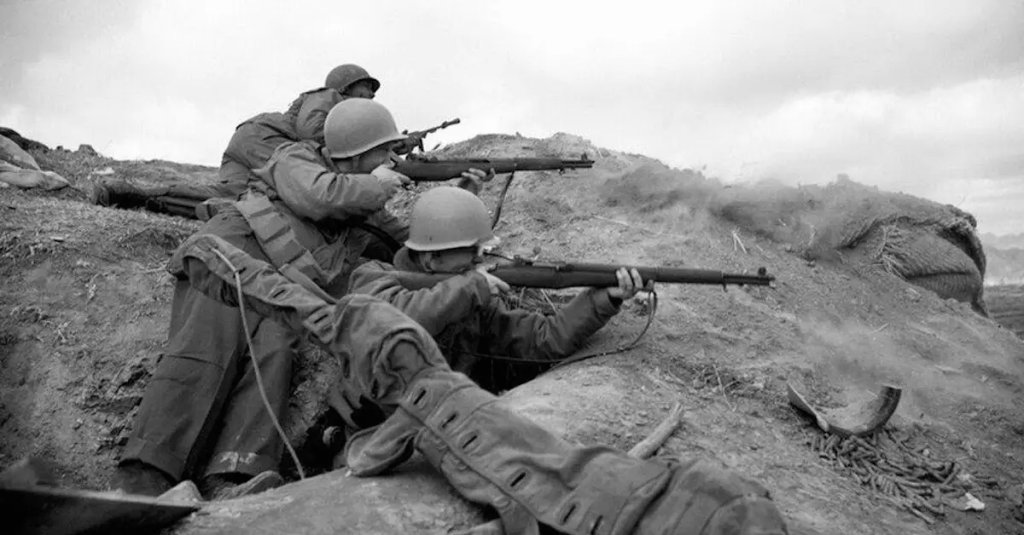The bottom line for the military is always cost-effectiveness (barring elite tier-1 units). As we’ve seen with the Modular Handgun System competition, acquisitions are driven by the lowest bid and not necessarily performance. The argument between Glock and Sig Sauer aside, the necessity of fiscal responsibility forced the Army to limit the effectiveness of their .30-06 ammunition prior to America’s entry into WWII.

The Army adopted its first smokeless powder cartridge, the .30-40 Krag, to replace the black powder .45-70 in the early-1890s. After a review of the cartridge’s performance in the Spanish-American War, the U.S. Army ordnance corps made modifications to the round in an attempt to match the ballistics of the superior 7x57mm Mauser cartridge used by the Spanish during the war. Though the ordnance department succeeded in increasing the muzzle velocity of the .30-40, the new cartridge had a tendency to damage the rifles that shot it due to the increase in pressure.
In 1903, following the recommendations of the infantry Small Arms Board, the Army replaced the .30-40 with a higher velocity cartridge, the .30-03. Also called the .30-45 due to its 45 grain powder charge, the .30-03’s service was short-lived. The heavy 220 grain M1903 bullet required high pressures and temperatures to achieve its maximum effective velocity which caused severe bore erosion in rifle barrels. Additionally, the bullet’s weight and roundnose design still left it ballistically inferior to its European 7mm and 8mm counterparts. After just three years, the .30-03 was replaced by the venerable .30-06.

Equipped with a modern pointed spitzer bullet, the .30-06 was more effective at long range than the .30-03. However, the Army’s claim of a maximum range of 4,700 yards was disproved when the cartridge saw service in WWI. Machine gun barrages used as indirect fire with the .30-06 M1906 round proved to be 50% less effective than expected. In 1918, extensive testing showed that the M1906 cartridge actually had a maximum effective range of 3,300 to 3,400 yards. The Germans experienced a similar problem with their ammo which they solved by replacing the flat-based bullet with a boat-tail bullet. The result for the Germans was a round with a maximum range of approximately 5,140 yards.
In 1926, the U.S. Army ordnance corps applied the same solution to the .30-06. After extensive testing of the 7.5x55mm Swiss GP11 cartridge, the ordnance corps replaced the M1906 flat-based bullet with the M1 Ball’s boat-tail bullet. The new round had a higher ballistic coefficient, greater muzzle velocity, and a maximum range of approximately 5,500 yards. Despite the development of the .30-06 M1 Ball cartridge, the Army continued to field the M1906 cartridge.

With over 2 billion rounds of wartime surplus ammunition, the Army needed to expend the old ammo before it introduced the new. Over the next decade, old stocks of M1906 rounds were shot in training as the supply of the new M1 Ball ammo was allowed to grow. However, by 1936, the Army realized that its new long-range rifle round had a serious problem—it was too effective.
Firing ranges are designed with an emphasis on safety. When Murphy’s Law rears its ugly head and Private Joe Schmo has a negligent discharge at an angle that lobs a bullet as far as it can possibly travel, that round needs to land within a designated impact area. As a result, military firing ranges of the day had all been designed with the ballistics of the .45-70, .30-40 Krag, and .30-06 M1906 rounds in mind. Due to its increased maximum range, the performance of the .30-06 M1 Ball was beyond the safety limitations of most ranges.

With war looming on the horizon and the cost of modifying ranges to accommodate the M1 Ball prohibitively expensive, an emergency order was issued to manufacture mass quantities of a new .30-06 round that more closely matched the ballistics of the expended M1906 cartridge as quickly as possible. Developed in 1938, the new M2 Ball cartridge was nearly identical to the M1906, though it had a slightly greater maximum range of 3,450 yards. While the M2 Ball became the standard cartridge for the U.S. military, the Marine Corps retained stocks of the superior M1 Ball ammo for use by their snipers and marksmen.
Despite its ballistic inferiority to the M1 Ball, the M2 Ball was still an extremely capable cartridge. It saw service through WWII, Korea, and even saw limited use in Vietnam before it was replaced by the 7.62x51mm and 5.56x45mm NATO rounds. Today, a high volume of military surplus firearms chambered in .30-06 and a dwindling supply of military surplus ammunition has led to many manufacturers producing commercial .30-06 M2 Ball ammo.


